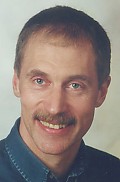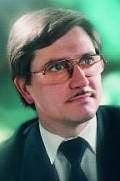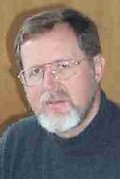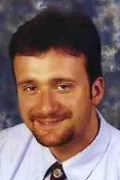FIG Commission 6

|
Work Plan 2003-2006
 Original work plan in .pdf-format.
Original work plan in .pdf-format.
Title
Engineering Surveys
 Mr. Svend Kold Johansen, Chairperson of Commission 6
Mr. Svend Kold Johansen, Chairperson of Commission 6
Terms of reference
- Acquisition, processing and management of topometric data and of all
related information throughout the life cycle of a project;
- Development and implementation of adequate survey methods in Engineering
projects;
- Metrology, quality control and validation for civil construction and
manufacturing of large objects;
- Deformation monitoring, analysis and interpretation;
- Prediction of deformation and movements in Engineering projects, mines and
areas of geological hazard;
Mission statement
- Promote the knowledge, skills and abilities of surveyors in civil and
industrial works within the various professional fields of Engineering;
- Support all development and multidisciplinary expertise leading to
integrated survey methods, using various instruments and sensors and combining
geometry with all other data relevant to each Engineering problem;
- Provide a forum for exchange of knowledge related to Engineering analysis
of survey data for the study of structures;
- In addition to the links with related Working Groups of IAG, ISM and
ISPRS, look for possible connections within organisations of civil, structural
and mechanical engineers and within those dealing with metrology and quality
control - at the national and international level.
General
This Working Plan covers a wide scale of survey disciplines related to
plants, installations and constructions of any kind. Through the Working Plan
Commission 6 want to extend the Council strategy by encouraging:
- development of international standards and qualifications,
- closer links and co-operation with other FIG Commissions,
- development of best practice guides in Engineering Surveys,
- actively support and participate in FIG regional events.
Commissions endorse the underlying concept that respect for Cultural and
Linguistic issues is of paramount importance and that Commissions will be
sensitive to these issues in the way they work. This will be implemented by
encouraging multilingual abstracts and presentations in general meetings and
through the use of an appropriate regional language during regional meetings.
Working Group 6.1 - Deformation Measurement and Analysis
Policy Issues
- Automation of monitoring surveys.
- Enhancement of geometrical modelling of deformations from integrated
deformation surveys
- Physical interpretation of deformations including numerical modelling and
prediction of deformations and back analysis.
Chair
Specific project(s)
Workshop(s)
-
11th International Symposium on Deformation Measurements, Santorini,
Greece, 25-28 May 2003;
- Workshop
on Vibration and Cyclic Deformations, Nottingham, UK, 2004;
- 12th International Symposium on Deformation Measurements, China or France,
2005; postponed to Baden, Austria, May 2006
- 12th International Symposium on Deformation Measurements and 3rd Symposium
on Geodesy for Geotechnical and Structural Engineering, Baden, Austria, 22-24
May 2006
- FIG Congress Munich, 8-13 October 2006
- Contributions to various joint meetings and FIG working weeks;
Publication(s)
- Proceedings of the meetings (by the host).
Beneficiaries
- Geodetic engineers dealing with comparative measurements of deformed or
unstable objects, geologists, geophysicists, and civil and structural
engineers concerned on this issue.
Working Group 6.2 - Engineering Surveys for Industry and
Research
Policy issues
Engineering surveys in industry and research demand ultimate quality to be
realised in ever-shorter time slots and under spatially most limited conditions.
WG2's main goal is to provide the specialists involved in that kind of missions
with the latest state of the art concerning:
- The use of adapted survey techniques in industry & Engineering;
- A multidisciplinary collaboration between survey engineers, civil
engineers, structural & mechanical engineers, R&D scientists - for a better
approach of complex Engineering survey problems;
- Specific algorithms, instrumentation, equipment and techniques in
Engineering Surveys;
- High precision measurements and special techniques for the large scale
metrology of big equipment or structures;
- Integration of survey & alignment sensors with actuators and/or tools for
on-line monitoring and control of a given process (dynamic systems);
- Relevant modules for the 'Optical 3d Measurement Techniques' series.
Chair
 |
Thomas Wunderlich
Germany
E-mail:
Th.Wunderlich[at]bv.tu-muenchen.de
|
 |
Vice-chair
Alojz Kopacik
Slovakia
E-mail: alojz.kopacik[at]stuba.sk
|
Specific project(s)
- Engineering surveying procedures for power plants
- Engineering surveying procedures for linear and circular accelerators
- Engineering surveying procedures for nuclear research facilities
- New techniques for as-built documentation and facility inventory
- Industrial metrology in production, assembling and finishing processes
- In-situ calibration of industrial robots
Within topic 4 of the list above special emphasis will be addressed on
terrestrial laser scanning to stimulate quick acceptance and diversified
application by surveyors. Object scanning represents a growing and promising new
market, which evidently also attracts non-geodetic competitors. Urgent actions
to be managed by a group of WG6.2 members cover:
- Advising optimal instrument for each special application of a mission
catalogue;
- Development of suitable planning tools for extensive scanning tasks;
- Optimisation of necessary georeferencing procedures;
- Software improvements to increase variety of best-fitting objects;
- Monitoring of CAD-SW behaviour under heavy scanning data load;
- Dialogue with manufacturers to realise competent consumer wishes;
- Expansion of application fields.
Workshop(s)
- Co-sponsoring INGEO 2002, November 11 - 13, Bratislava
- Special workshop towards the end of 2003;
- Tutorials as part of the "International Course for Engineering Surveying",
March 15-19, 2004, Zürich
- Contributions to the FIG Working Weeks and to FIG Congress;
- Specific seminars or workshops on dedicated topics.
Publication(s)
- Proceedings of the meetings (by the host).
Beneficiaries
- Surveyors wanting to acquire more expertise in these special applications;
- Designers and manufacturers in various industrial or Engineering
activities;
- Engineers dealing with quality control of large objects or structures;
- Scientific laboratories dealing with particle accelerators and detectors,
fusion rings, gravitational antennas, power lasers, etc.;
- All scientists and engineers dealing with large scale metrology and
accurate positioning in R&D sectors or in Industry;
- Universities and manufacturers involved in the development of special
instruments.
Working Group 6.3 - Engineering Survey Data Bases and Facility
Management
Policy issues
- Focus on the role of the surveying engineer as the responsible manager of
spatially referenced information;
- Support for the co-ordination of the activities of other disciplines.
Chair
 |
Lothar Gründig
Germany
E-mail:
gruendig[at]inge3.bv.tu-berlin.de |
 |
Vice-Chair
Hande Demirel
Turkey
E-mail: hande.demirel[at]itu.edu.tr |
Specific project(s)
- Concepts of data models for the Mapping of relevant 4D or 5D project data,
covering 3D geometry, time, and descriptive attributes;
- Exchange, provision and presentation of facility management data in
computer networks;
- Data integration for this subject, taking into accounts the presence of
redundant data and different sources of information;
- The automation and combination of feasible data acquisition techniques.
Workshop(s)
- Workshop on Engineering Survey Data Bases and Facility Management, Berlin,
Germany, 2004
- Sessions and contributions to joint seminars, workshops and symposia.
Publication(s)
- Proceedings of the meetings (by the host).
Beneficiaries
- Surveying engineers, engineers and managers involved in facility
management tasks.
Working Group 6.4 - Engineering Surveys for Construction Works and
Structural Engineering
Policy Issues
- Promoting the use of adapted survey techniques in industry & Engineering;
- Promoting a multidisciplinary collaboration between survey engineers,
civil engineers, structural & mechanical engineers;
- Promoting the understanding of fibre optic sensors, e.g. interferometric
sensors, Brillouin and Raman scattering and Bragg gratings;
- Study the use of embedded sensor arrays and the role of advanced surveying
techniques for structural monitoring;
- Creating an awareness of surveyors through a task force 'Fibre optic
sensors' of the rapidly emerging technology of fibre optic sensors as
"non-geodetic" sensors to measure deformations (strain) and temperatures in
civil engineering structures
Chair
 |
Gethin Wyn Roberts
United Kingdom
E-mail:
gethin.roberts[at]nottingham.ac.uk
|
 |
Vice-chair
Jin Fengxiang
China
E-mail: jinfengxiang[at]yahoo.com
|
 |
Chair of Task Force 6.4.1 -
Fibre Optic Sensors
Fritz K. Brunner
Austria
E-mail:
brunner[at]ivm.tu-graz.ac.at |
Specific Projects
- Precise methods and equipment for staking out during construction and
structural works;
- QC and documentation for as build compared to as designed;
- Precise methods and equipment for Engineering surveys for visualisation
and photo match;
- Precise methods and equipment for remote surveys. (Terrestrial laser
scanners etc.)
- Dynamic Monitoring of Buildings and Structures;
- Offshore construction surveys.
Task force 6.4.1: "Fibre optic sensors":
- Monitoring using fibre optic sensors;
- Health monitoring of structures, including real-time and "non-geodetic"
sensors in Engineering;
Workshops
- Regular symposia and exchanges between researchers and concerned
professionals;
- Possibly integrating the workshop at Nottingham under commission 6.1 with
this group in 2004.
- Contributions to various joint meetings and FIG working weeks
- Contribution FIG World Congress in 2006.
Publications
- Proceedings of the meetings (by the host).
- Web page
Beneficiaries
- Surveying profession becoming involved in this developing technology which
will partly replace current geodetic techniques;
- Surveyors wanting to acquire information about fibre optic sensors as used
in "smart civil Engineering structures";
- Engineers who has to decide about the best techniques to monitor civil
Engineering structures;
- Universities teaching advanced sensor technology.
- Engineering Surveyors and Engineers involved with construction and setting
out will benefit, as well as structural engineers, current buildings and
future building designs.
Co-operation with Sister Associations
Commission 6 intends to continue co-operation with Sister Associations,
especially together with FIG Commission 5 whose interests are quite similar to
Commission 6. Further more The International Society for Mine Surveying (ISM),
The International Association of Geodesy (IAG), International and the
International Society for Photogrammetry and Remote Sensing (ISPRS) are of
interest.
Co-operation with the United Nations Agencies
Commission 6 intends to locate and establish co-operation with UN agencies of
relevance.
Other Activities
Communications
Commission 6 will develop and maintain a web page with linkages to other
relevant web pages to keep commission delegates, other FIG members and the
public informed. The secretariat will provide the webmaster.
Commission 6 will provide an annual newsletter with input from the working
groups. This will be distributed by e-mail.
New partnerships
Commission 6 keeps maintaining co-operation and partnership with ISM and IAG
Special Commission 4.
Calendar of Events
For updated version, please see
http://www.fig.net/events/
2002
- Co-sponsoring INGEO 2002, November 11-13, Bratislava, Slovak Republic
- Supporting the 7th International Workshop on Accelerator Alignment (IWAA),
November 11-14, SPring-8, Japan
2003
2004
-
Workshop on Vibration and Cyclic Deformations, Nottingham, UK, 2004;
- FIG
Working Week 23-28 May 2004, Athens Greece;
- Tutorials as part of the "International Course for Engineering Surveying",
March 15-19, 2004, Zürich
- Workshop on Engineering Survey Data Bases and Facility Management, Berlin,
Germany, 2004.
2005
- 12th International Symposium on Deformation Measurements, China or France,
2005; - postponed to Baden, Austria, May 2006
-
FIG
Working Week 7-12 May 2005, Cairo, Egypt.
2006
- 12th International Symposium on Deformation Measurements and 3rd Symposium
on Geodesy for Geotechnical and Structural Engineering, Baden, Austria, 22-24
May 2006
- FIG Congress Munich, 8-13 October 2006
21 June 2002
|

